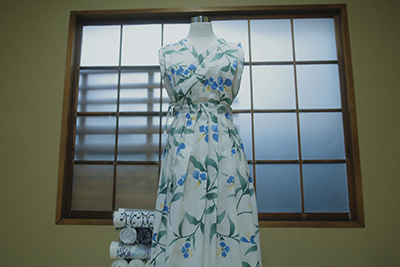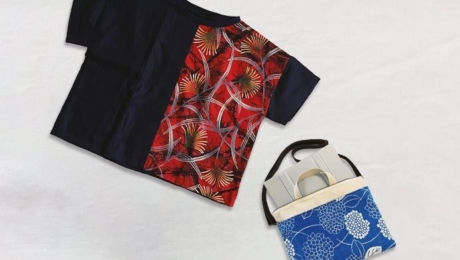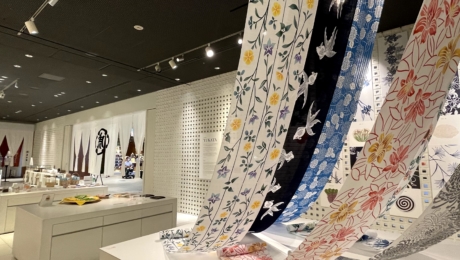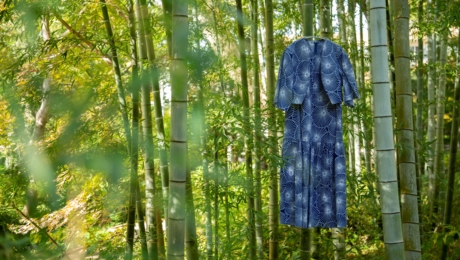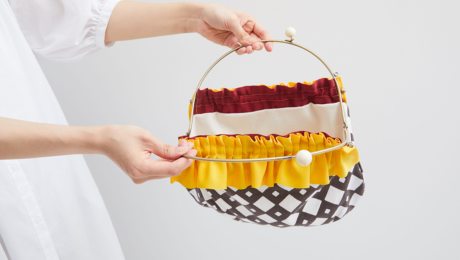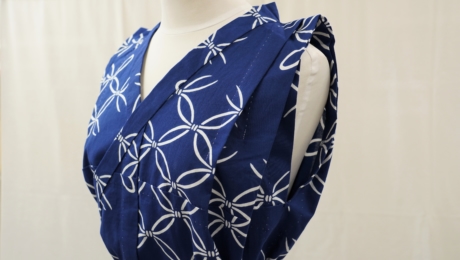
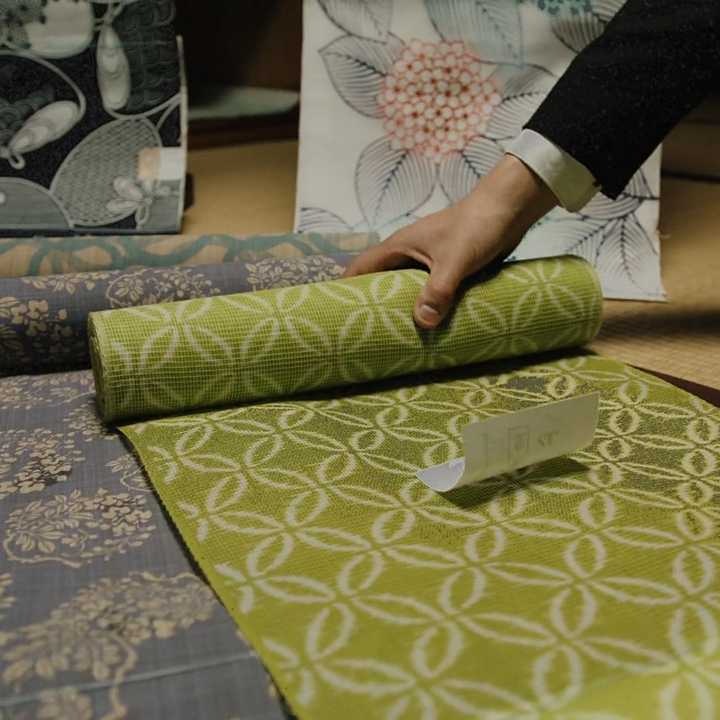
Edo-Style Chic, Propagated Through Traditional Stencil-Dyeing
The kimono fabrics store Chikusen is so well-loved by Tokyoites that it is said, “For yutaka, it has to be Chikusen.” The store brings forth new creations that adopt modern designs while carrying forward patterns passed down from the Edo period.
The store was established in the latter half of the Edo period in 1842, a time when extravagant dress was prohibited for commoners, and even the material and colored patterns of kimono were severely restricted. Tiny, fine “Edo komon” patterns, which looked plain from a distance, were how commoners expressed their taste for fashion. Sentaro, the store’s founder, had close ties with people of culture and, incorporating the sensibilities of Kabuki actors, designed yukata with chic, fine-patterned stencil dyes. The yukata, which had up until then been a plain bathrobe, became much favored by the actors, which led to their boom in popularity as fashionable casual wear among the people of Edo. The founder began incorporating beauties of nature, a theme popular with commoners, in his patterns, as well as managing craftsmen who knew a diversity of dyeing techniques, increasing the variations in his products, and expanding his trade to a nation-wide level.
One of the techniques Chikusen has preserved from the Edo period is the traditional technique of “Nagaita Chugata,” used to dye fabric with only the color indigo. It is done by affixing the fabric to a long board, putting pieces of pattern paper on top and, using a spatula, applying dye-resistant paste on it in succession. Once dried, the same process is performed on the reverse side, before the fabric is dyed in one go by dipping it in a vat of indigo. The paste is applied so that the patterns on the front and back overlap each other perfectly, making the pattern stand out in sharp relief. This is a craft that requires experience and skill. Other techniques include “Chusen,” created in the Meiji period, which uses both multiple colors and gradation, and “Hikizome,” where a brush loaded with dye is dragged along the fabric after the paste has been applied. Chikusen imparts the beauty of hand-dyeing, where technique is matched to fabric and pattern, to the present day.
Chikusen doesn’t stop at yukata and “Edo komon” patterned kimono; it also proactively developing products that tweak traditional techniques and patterns to the modern day. Hawaiian shirts, bags, and masks are some of the chic items with Japanese design that Chikusen is successively developing for use in daily life. From here on, the store further plans to spread Chikusen textiles, which fully embody Edo chic, to markets both inside and outside of Japan.
